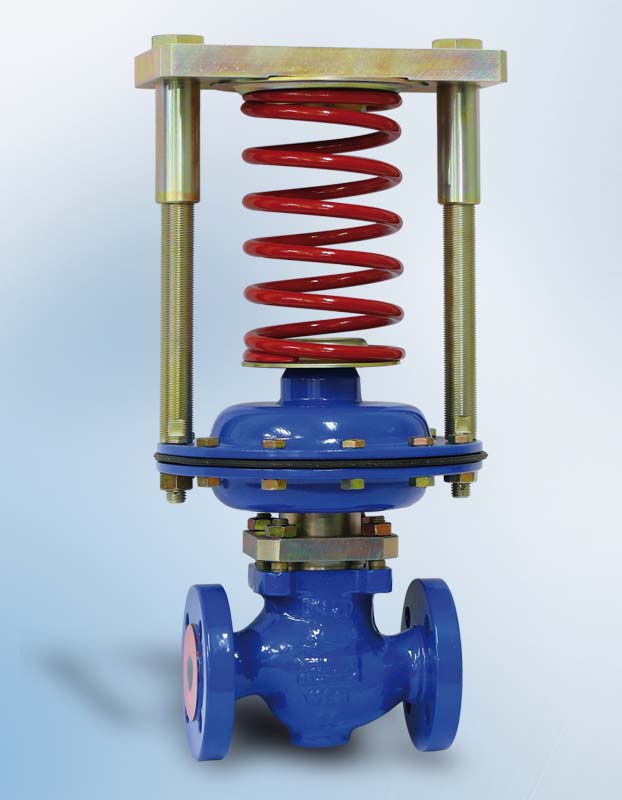
PRESSURE REGULATORS RC-5-2
FUNCTION
Pressure regulators are designed to maintain constant fluid pressure upstream the valve. Regulators are used in steamand air - pipe networks (other fl uids are also permissible). Regulator does not require external supply of energy.
CONSTRUCTION
Regulator comprises three main units:
• single-seated valve (1),
• actuator (2),
• adjuster set (3).
CHARAKTERISTICS
• steel and stainless steel materials used
• high tightness of the shut-off due to the application of plugs with PTFE, EPDM and NBR sealings
• design reducing the noise level
• the possibility of fitting with piston or bellows actuators
PRINCIPLE OF OPERATION
Regulated pressure, which is applied to actuator inner chamber causes spring compression in adjusterset. Resulting spring tension should allow for attaining equilibrium of forces, when fl uid pressure upstream the valve achieves required boundary value. Further increase in fl uid pressure will disturb the equilibrium and cause valve plug to open and regulated pressure to drop down to its set-up value. Valves are in principle hydrostatically balanced at fl ow close. With tight design it is absolutely necessary to install a strainer on the supply side. In case of standard design, strainer’s installation guarantees a safe operation of the regulator and increases its lifecycle.
Technical data
| Regulator’s Size | DN 15; 20; 25; 32; 40; 50; 65; 80; 100; 125; 150; 200; |
|---|---|
| Nominal pressure | PN 16; 40 |
| Kvs coefficient | Kvs 0,6 ... 250 m3/h |
| Max. fluid temp | 0 / +240°C |
| Setting ranges | 0,1 ... 11,0 bar |
| Flow characteristics | linear |
| Leakage class | • IV class PN-EN 60534-4 • VI class PN-EN 60534-4 |
| Body Materials | • GP240GH (1.0619) • GX5CrNiMo 19-11-2, (1.4408) |
 37-700 Przemyśl, ul Obozowa 23
37-700 Przemyśl, ul Obozowa 23 np@reduktory.com.pl
np@reduktory.com.pl 16 678 30 20,
16 678 30 20, 
